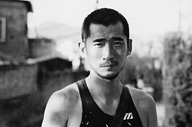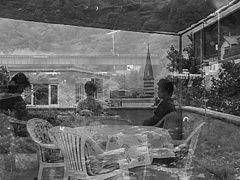Juror
Oki Hiroyuki
 [Juror’s Statement]
[Juror’s Statement]
What possibilities, power, and joy can visual images bring to our lives, now and in the future? The ways we encounter images today seem endless: active and passive interactions with our own and others’ images through our mobile phones and computers; the inescapable onslaught of visual (advertising?) images, real-time news, and live television; software of all kinds; films that we experience in the theater . . . Images take shape before us, confront the individual, and produce the shifting concepts, morals, beliefs, and imagery that transcend the individual and in turn receive feedback from individuals, families, and the community-at-large.
As one who continues to assess the relationship between images⇔visual images⇔art(?) within the context of these (psychological, cultural, economic, and political) realities, I look forward to seeing what the films in the New Asian Currents program of the Yamagata International Documentary Film Festival will show us, both as individual works and as a collective whole, and to experiencing the feelings and discoveries that await.
Born in 1964 in Tokyo, Oki lives in Kochi Prefecture. He began filmmaking while he was a student at the University of Tokyo, where he graduated with a degree in architecture in 1988. In 1989 he graduated from the image laboratory at Image Forum in Tokyo, for which his graduation project was a three-hour 8mm piece titled A Film of Matsumae-kun. Every year since, he has released a film in the “Matsumae-kun Series,” now in its twentieth year. Oki moved to Kochi Prefecture in 1991 and shifted the base of his productions there. His 1995 work, Heaven-6-Box, produced by the Museum of Art, Kochi, won the Network for the Promotion of Asian Cinema (NETPAC) award at the Berlin International Film Festival. He has since branched out into video, installation, and performance art in many venues. Since 2000 he has participated in the annual Kochi Yosakoi dance festival as the leader of the team M.I. His films were shown at YIDFF ’91, ’97, ’99, and 2007. |
NA-MU
 JAPAN / 2004-2009 / Japanese, English, Nepalese, Tibetan, Turkish, Hebrew, Arabic / Color / Video / 70 min
JAPAN / 2004-2009 / Japanese, English, Nepalese, Tibetan, Turkish, Hebrew, Arabic / Color / Video / 70 min
Director, Photography, Editing: Oki Hiroyuki
Producer: Foujita Toshimasa, Ikura Toshiya
Production Companies: FOU production, ikura_pro, Ookiiki
Special thanks: Sano Gallery
World Sales: FOU production
NA-MU is the seventh installment in a digital series produced with a core of footage shot every year in Kagawa Prefecture during the 10-day period from August 22 to August 31.
Filming began in 2004 with a 10-day shoot, July 1–10, in Israel, Palestine, and Turkey; continued with the core Kagawa 10-day shoot, August 22–31; and concluded with a 10-day shoot in Nepal and Tibet, September 19–28. With the conclusion of shooting from Lhasa to Dagzê in Tibet on September 28, the first anniversary of my father’s death, the three-part structure of the 2004 footage was in place.
NA-MU also incorporates three additional elements: fluid images shot mainly in the regions of Tokyo, Kochi, Osaka, and Okayama during the summer and autumn of 2005; and footage from two 10-day shoots, July 1-10, in 2006 and 2007. A sextet with six layers of audio-visual imagery, NA-MU adheres strictly to a structure of seven minutes per chapter and, with ten chapters, runs 70 minutes.
The newest version of NA-MU, the Yamagata Mix, is based on the theme of “being alive,” and has continued to “live,” interacting with occasional changes in thought, edits, presentations, and filming, while giving birth to images such as “i—is different,” “(St. Tomoki’s) abyss/Abaddon,” and “vile,” and undergoing a final edit after shooting “the wind” in July 2009.
(Oki Hiroyuki)
